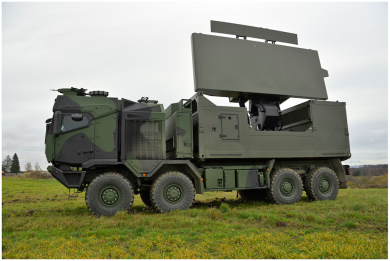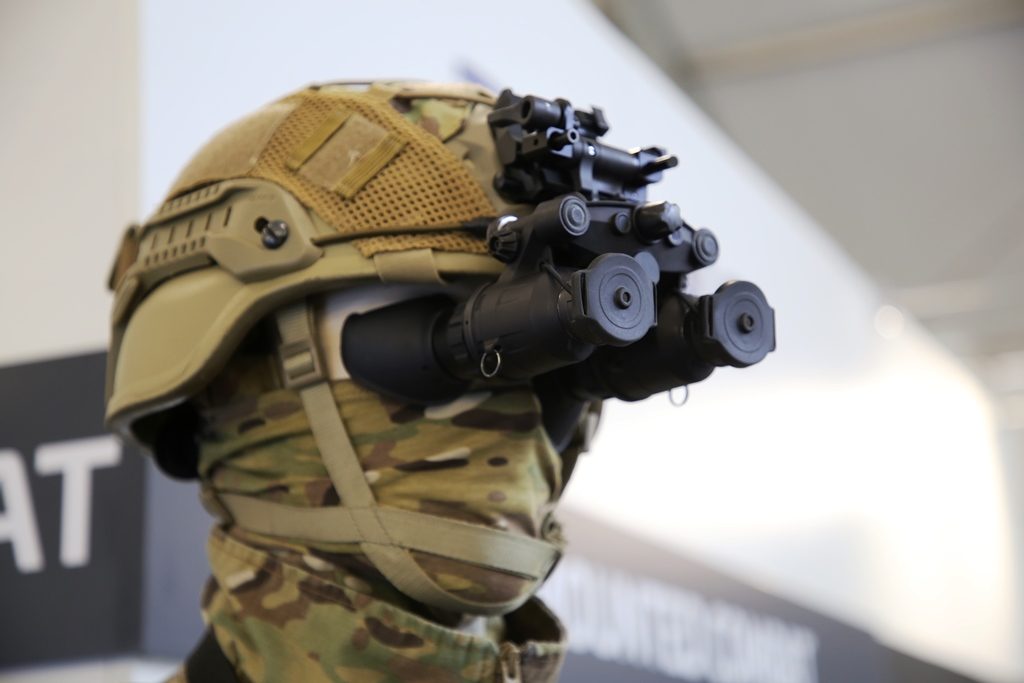
Cyberprotection for Thales night vision systems
When Thales introduced its Sophie Ultima at Eurosatory 2018 its new product marked a quantum jump in targeting binoculars, as it packed four functions, target locator, tele-converter, day laser rangefinder and tactical binocular in a single package weighing less than 2.5 kg with batteries. At SOFINS, the Special Operations Forces Innovation Network Seminar organised by the Cercle de l’Arbalète at the Camp de Souges, north of Bordeaux, more details emerged on the Ultima, as well as on other Thales products in the same segment.
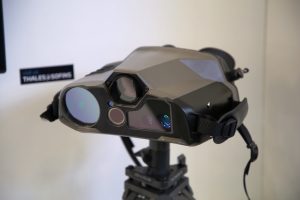
One of the key elements of the Ultima is the direct view optical channel fitted with a 7×35 lens featuring a 6° Field of View (FoV) that provides the best possible image to the operator. That said, for daylight a colour TV channel is also present, allowing recording of images and video and their transmission through the net. For night vision and decamouflaging the Ultima is fitted with a thermal channel; its cooled 640×512 sensor works in the Medium Wave InfraRed (3-5 µm) and is fitted with an optical zoom providing a FoV ranging from 2° to 20°. The focal plane array is of the HOT type, hence it works around 150 °K rather than 80 °K, which allows using a less powerful cooling machine, which also features a much greater reliability MTBF being in excess of 10,000 hours, the higher operating temperature also providing a reduced turn-on time of around 3 minutes. The thermal channel can be fused with the daylight channel in order to see hidden targets behind camouflage, playing between visible and IR. It is obviously fitted with a laser rangefinder with an 8 km range, a digital magnetic compass and an embedded C/A GPS. The Sophie Ultima is designed for specialised operators belonging to elite units, such as Special Forces and JTACs (Joint Terminal Attack Controllers). Compared to information gathered when the Ultima was launched, an other detail was unveiled; to ensure maximum protection against cyber attacks, a card with cyber protection elements has been included into the Ultima, the same path having been followed for its less sophisticated sister product, the Sophie Optima, virtually launched at Eurosatory 2020.
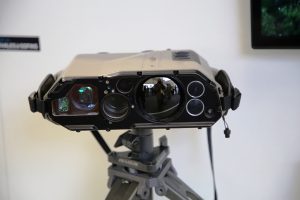
The Optima is aimed at conventional forces commanders at platoon level, and is therefore a more affordable system as it has to be acquired in greater numbers. The main difference is in the thermal channel, where the cooled MWIR sensor is replaced by an uncoooled HD sensor. Working in the 8-12 µm Long Wave InfraRed (LWIR) band, the Lynred 1280×720 matrix can fit into the Optima as it adopts last generation technologies allowing reducing the pitch down to 12 µm. The thermal channel has a dual FoV, 10° and 20°, while the day channel remains the same of the Ultima, ad well as the other targeting elements, the rangefinder having a range comparable to that of the Optima detection capability. According to Thales its uncooled product provides D/R/I ranges similar to previous generation cooled systems, and has proven to be compatible with the ATAK kit.
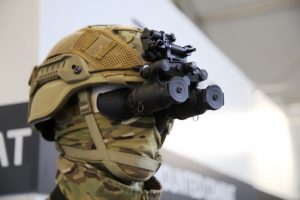
Last but not least another product that due to COVID was unveiled virtually, the Nellie binocular NVG, which provides an over 47° FoV, the key issue being that resolution is the same of a 40°FoV system. This peculiarity comes from the know-how of Angénieux, one of the Thales Group companies specialised in high quality optics cinema lenses. At less than 460 grams including batteries, the Nellie allows movements up to Night 4. Thales is currently launching the Nellie production, the system being not yet in service.
Photos by P. Valpolini



